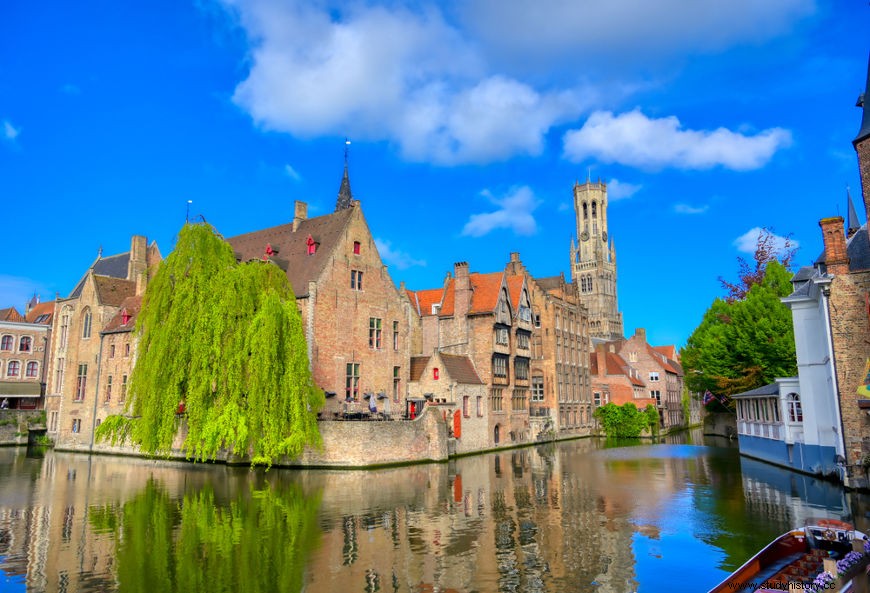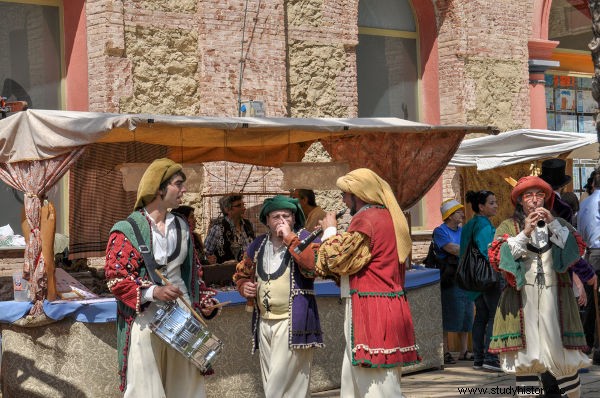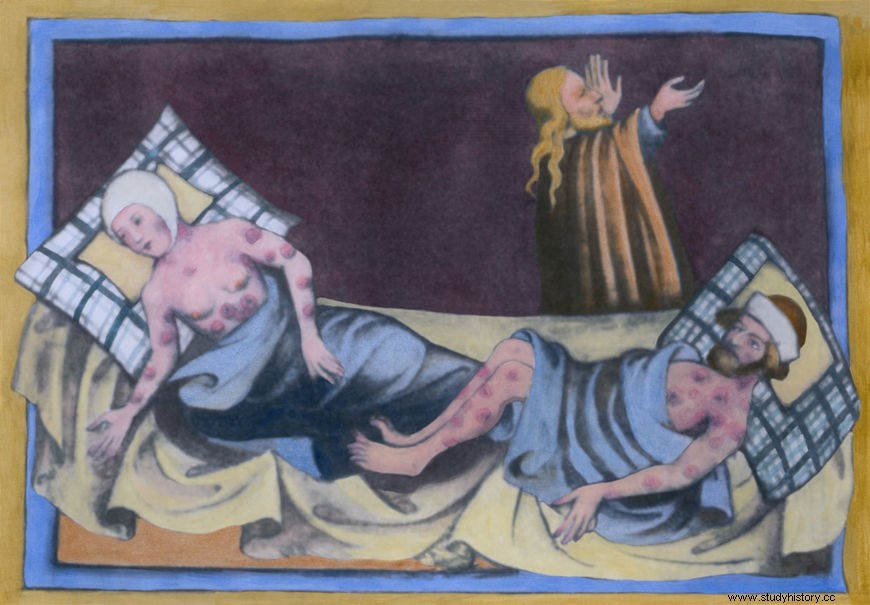The Late Middle Ages is one of the periods that make up the Middle Ages and refers to the events of the 11th to the 15th century. This was a period of great change in medieval Europe, as feudalism (in its classical sense) began to weaken due to the strengthening of commerce, the revival of European cities and the emergence of national states.
During the Late Middle Ages, Europe witnessed a technological improvement that was reflected in agricultural techniques, for example. The weakening of feudalism made possible the emergence of new political practices, and monarchies were consolidated with the national state. Finally, the Late Middle Ages was a period of wars, in which the Crusades stood out.
Login also :Gothic architecture:one of the hallmarks of the Late Middle Ages
Feudalism
According to the periodization stipulated by historians, feudalism was at its height during the Late Middle Ages. He wasn't just an economic system that structured the way of production of Europeans in that period but was related to a series of other areas.
Therefore, the social division and its status , the vassal relationship , which is part of the existing political aspect between the king and his nobles, and even the current ideology in that period, and used mainly by the Church to justify its privileges and the unequal condition of that society, were also part of feudalism.
In this system, the most commonly analyzed aspect, without a doubt, is the economic one. Within it, the manor was one of the most important places. The fief was the name given to the lands of the nobles, and they contained the lands that would be cultivated, the facilities that were part of the peasants' work, the houses in the fields and a forest in which they hunted, took wood and harvested. fruits.
Fiefs were lands that nobles could own due to the wealth of their own family, however, they were obtained mainly through the alignment relationship . Europe during the Late Middle Ages was at the height of the process of enclosure or castlement of the fiefs, in which they fortified themselves in great castles.
Castle-building was a response of Western European populations to invasions that the continent began to suffer, from the 9th century onwards, from Vikings and Hungarians . To protect itself, the solution found by this part of the continent was to build fortified houses. Thus, when necessary, these castles housed the population installed in the manor.
In these places, peasants settled on the lands with the permission of thefeudal lord and they had to survive through their work. In order to live under the protection of his lord and use his lands and facilities, the peasant was obliged to pay a series oftaxes . Some of these taxes were the corvey , the hoist and the banality .
In the political field, feudalism manifested itself through the allegiance relationship that created a relationship of fidelity and dependence between kings and nobles. This relationship arose around the eighth century , during the Carolingian Empire, and was very common in Europe until the mid-Late Middle Ages. In it, king and noble made an agreement in which the former provided a fief to the east, which, in return, helped in the administration of the kingdom and sent soldiers in times of war.
In society, feudal Europe was estates, that is, divided into classes with little social mobility . The current groups were:peasants , who had to survive from their work and were obliged to live on heavy taxes; the clergy , composed of members of the Catholic Church; and the nobles , social elite of the Middle Ages, privileged class descended from the wealthy Romans or people who had ascended, at some point, in the High Middle Ages.
The historian Jacques Le Goff states, however, that from the 13th century onwards, this division of society ceased to exist. The records of the time indicate that it was replaced by a new social organization , and Le Goff reiterates that it was the result of the consolidation of the national state what happened in this period|1|.
With the growth of cities , a phenomenon that began in the twelfth century, these places began to count on a new significant social group:the bourgeois , inhabitant of burg — annex to the city created with the installation of small traders. The end of the Middle Ages is a period of many changes that paved the way for the formation of a new society, with a new political and economic organization.
Login also :How Vikings Viewed War in Medieval Europe
Population growth

The Late Middle Ages is a period of innovations techniques and growth population . The increase in population in Europe was an ongoing process since the 8th century, but intensified from the 11th century onwards. A series of factors explain this population growth, and historian Hilário Franco Junior stipulates four of them|2|:
-
The retreat of epidemics from the 8th century onwards;
-
The concentrated character of medieval wars, as they were restricted to small places and contained few soldiers;
-
The improvement in climate in the Late Middle Ages, marked by an increase in temperature;
-
Technical innovations that ensured more productivity in agriculture.
The population increase was significant (by medieval standards), and, according to statistics brought by Le Goff, the population in Europe jumped from 22.6 million in 600 to 54.4 million in 1348|3|. Hilário Franco Junior suggests slightly different data. For him, in 600, the European population was 16.3 million and jumped to 50.35 million, in 1300|4|.
One of the factors directly related to this, as mentioned, was the increase in agricultural production, and this was only possible thanks to the improvement in agricultural techniques that allowed a better yield from agriculture as a all. The new techniques are related to improvement in soil plow , with the use of plow and iron moldboard , and with the implementation of a three-year rotation system .
The result was that productivity improved considerably, and the yield went from one or two grains per seed planted to three or four grains per seed planted. In addition, there has been an increase in the amount of cultivated land. This was because there was the clearing of forests and the drying of marshy regions , which were previously impossible to grow.
Commercial and urban renaissance

The Late Middle Ages also saw considerable trade renaissance and cities . In the first case, the impetus took place when Europe began to count on an agricultural surplus that expanded the list of merchandise for traders and could be marketed with luxury goods.
The renaissance of commerce marked the emergence of two great commercial hubs in Europe:that of the Italians, in the south, and that of the Germans, in the Hanseatic League, in the north. A meeting point between these two poles took place at the champagne fair , in France. The rebirth of commerce is also largely the result of the opening of the East, which took place with the beginning of the Crusades, at the end of the 11th century.
In the second case, it is an event of extreme importance, since it brought about profound changes in the social organization of Europe. Urban development is related to population growth and it happened when peasants, to escape from serfdom, began to move to the cities, but also had dispossessed nobles that started to invest in businesses in them.
About this commercial revival and urban growth in medieval Europe, we suggest the following readings:Commercial Renaissance and Urban Renaissance.
14th century crisis

Europe faced a major crisis before the Middle Ages ended . This crisis happened in the 14th century and anticipated the changes that affected the structures of Western Europe. The great event of this period of instability was the Black Death .
An important starting point is that the 14th century went against the grain of previous centuries and was marked by very bad harvests . They happened mainly in the period 1315-1322 and were caused by a cooling of the climate and by very heavy rains. This resulted in lost crops and starvation , when the price of food soared, making it impossible for the poorest to buy it.
There were also peasant revolts and urban workers . In the first case, Le Goff suggests that the revolts were carried out by rich peasants who were losing their privileges, and, in the case of the cities, they happened due to the considerable increase in unemployment and the number of miserable people.
Login also :How the court of the Holy Inquisition worked, created in the 13th century
The great event of the 14th century, however, was the Plague Black . In 1348, an outbreak of bubonic plague began, a disease caused by fleas on rats that quickly spread throughout Europe. Le Goff suggested that the disease was carried to the mainland by ships Genoese who were installed in Caffa, colony of Genoa, Crimea.
This city had an outbreak of bubonic plague caused by the Mongols, who had been trying to conquer it since 1343. Unsuccessfully, they threw pieces of corpses contaminated with the disease in Caffa. The fleeing Genoese traders returned to Genoa and took the disease to Europe in their ships.
The Black Death acted in an epidemic way in Europe, contaminating at an impressive speed and acting in short cycles that returned frequently. The Black Death resulted in the death of 1/3 of the European population .
Notes
|1| LE GOFF, Jacques. Civilization of the Medieval West . Petrópolis:Vozes, 2016. p. 254-255.
|2| JUNIOR, Hilario Franco. The Middle Ages :birth of the West. São Paulo:Brasiliense, 2006. p. 26-27.
|3| LE GOFF, Jacques. Civilization of the Medieval West . Petrópolis:Vozes, 2016. p. 56.
|4| JUNIOR, Hilario Franco. The Middle Ages :birth of the West. São Paulo:Brasiliense, 2006. p. 24.
Image credits
[1] PatriciaGR and Shutterstock
